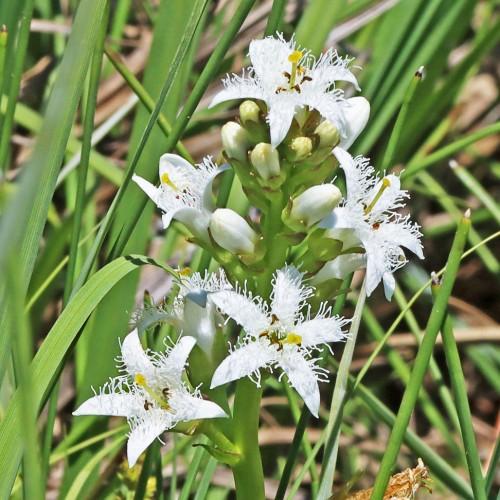
bog bean
Menyanthes trifoliata
Cycle:
Herbaceous Perennial
Watering:
Average
Hardiness Zone:
3 - 10
Flowers:
Flowers
Sun:
Full sun,part shade
Leaf:
Yes
Growth Rate:
Low
Maintenance:
Low
Drought Tolerant:
Yes
Salt Tolerant:
Yes
Care Level:
Medium
watering
Bog bean should be watered once a week during the growing season. During this time, the soil should remain evenly moist (not soggy). During the Winter, reduce watering to once every 3 weeks. It's important to water enough to keep the soil moist, but not overly wet. If an area experiences periods of heavy or prolonged rain, you may not need to water the bog bean plants at all.
sunlight
Bog bean (Menyanthes trifoliata) needs full sun for optimal growth and bloom. In ideal conditions, this plant species enjoys 6-8 hours of direct sunlight each day. In regions with long summers, this species may even do well with more than 8 hours of sunlight per day. In winter times, bog bean does not need as much direct sunlight, as the duration of the day is naturally shorter in these months.
pruning
For bog bean (Menyanthes trifoliata), pruning should take place once or twice a year during the winter months. Prune any dead or damaged stems and remove any excess foliage to encourage new growth. This will help promote a bushy form and larger flower heads. Cut back to the basal rosette of leaves, which will help keep the shrub in a neat shape. Additionally, lightly prune around the perimeter of the shrub to maintain the desired size and shape if necessary. Be sure not to remove too much foliage and always use the right pruning tool for the job.
